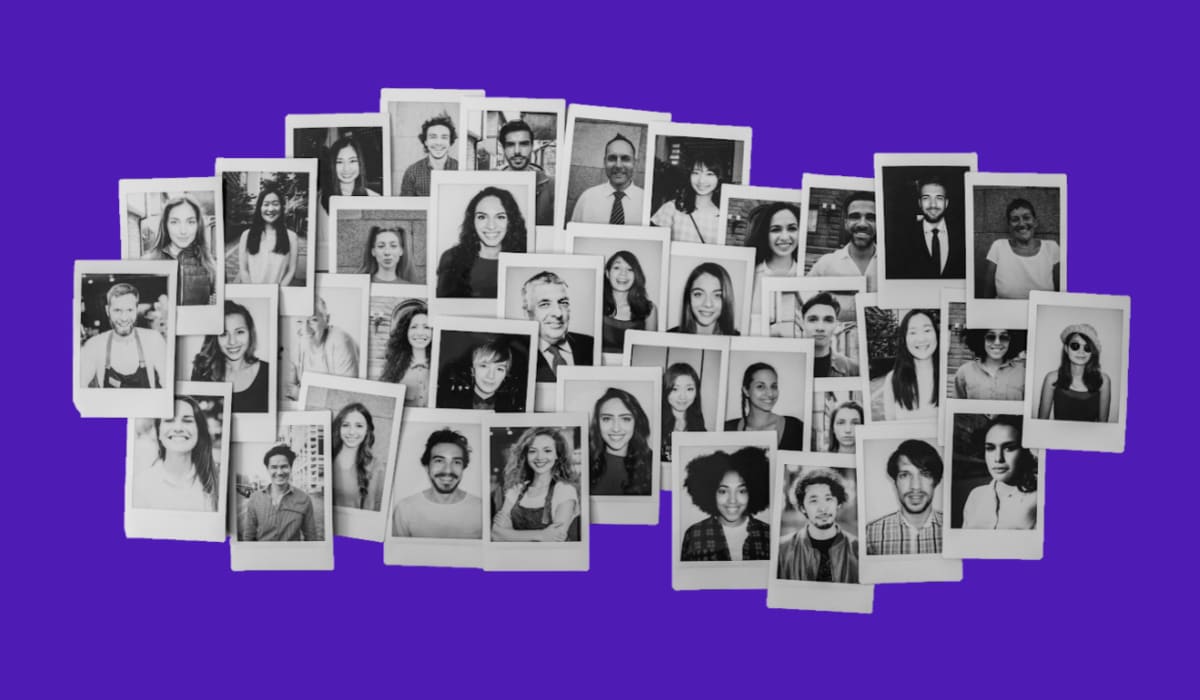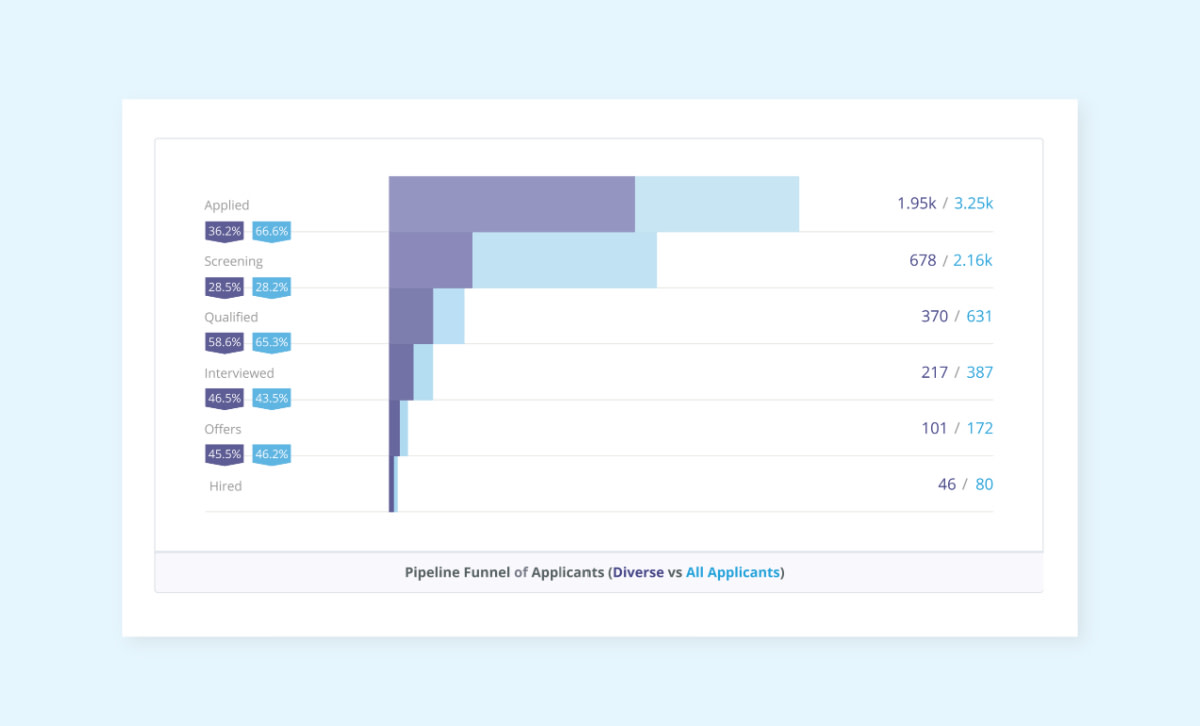Diversity and Inclusion: 5 Lessons Learned from Top Companies
Learn how successful companies are using people analytics to support diversity, equity, inclusion, and belonging (DEIB) initiatives.

Diversity, equity, inclusion, and belonging (DEIB) is now a business imperative with consumers demanding that organizations take action on their promises. New research from Edelman on racial justice and brands in America supports this: 60% of people say they will boycott a brand if they’re not aligned to their values.
Improving DEIB is not easy, especially when Chief Diversity Officers are set up to fail. But when organizations put fact-based insights in the hands of the right people–from the CEO to line managers–and they share those numbers using a thoughtful approach, it is possible to drive meaningful change.
Below are some examples of how real organizations use people analytics to take action on DEIB:
1. Examine your data by the right dimensions
While your overall DEIB may actually be good, when you look by any other dimension you may find pockets of problems where equality is lacking. Drill down deeper into your DEIB data by location, department, or job to ensure you don’t have any hidden red flags.
In a 2018 case study, pharmaceutical giant Merck KGaA leveraged people analytics and a variety of HR tools to increase the representation of women in leadership positions. By the end of 2018, women occupied 32% of leadership roles (manager-level and above) group-wide–exceeding their 2021 target of maintaining a 30% representation of women in these positions! These figures are increasing steadily across the company.
However, this good news is not the case within all business units, group functions, and hierarchical levels. Therefore, the organization is developing processes and implementing programs to increase women leaders where they are still underrepresented.
2. Focus on bottlenecks
When looking at the talent in their organization, an industrial manufacturer found that women perform as well as men—and occasionally outperform them. However, a review of the talent acquisition process uncovered the number of women applicants was disproportionately fewer than applicants who were men. Furthermore, as women moved through the hiring process, the interview process eliminated a higher proportion of women and diverse candidates.
The company decided to act. They instituted programs to increase the amount of women and minorities who move through the full hiring process. Programs for hiring managers include unconscious bias training and workshops on inclusive conversations. These enable a better hiring experience for women and minority candidates. The company increased accountability by sharing their goals publicly. They’ve signed on to significant public pledges and acts to establish gender parity and advance minorities. Good technology tools exist to help companies replicate these results.
Furthermore, the company shared their goals publicly to increase accountability: They’ve signed on to significant public pledges and acts to establish gender parity and advance minorities.

Visier People® shows the number of applicants at different stages within the hiring funnel. Fictional data used for customer privacy.
3. Embed DEIB into everything
Making a real change towards a fair and equitable workplace means embedding DEI in everything you do. When financial services company Comerica embarked on finding the right spans and layers for their organization, they kept diverse populations in mind. Their HR team looked at why hundreds of managers were only managing one person (often another manager). They dug deeper—including filtering these groups by gender, minority group, and other values—to find ways to reduce the hierarchy layers and empower more employees within the organization.
This analytics work also enabled them to also look at retention issues with their diverse groups. “[We] drill into why [they’re leaving] and how we can better address the needs of that population,” said Catherine Garrett, SVP of HR Administrative Management at Comerica in a recent webinar.
4. Make it easy for managers to access the data
Quick and reliable action to insights lets you take action on DEIB. To prevent bottlenecks on the analysis side, look for people analytics solutions that make it easy for leaders to access the data they need to make fact-based workforce decisions.
Merck KGaA provides leaders with access to people analytics insights to foster an inclusive culture that helps all team members contribute and continuously track progress. Business services company Experian also uses self-serve people analytics to provide segmented insights on gender diversity across the globe. The speed, ease, and consistency of these insights help boost the credibility of HR.
Likewise, Experian uses self-serve people analytics to provide segmented insights on gender diversity across the globe quickly, easily, and consistently—helping boost the credibility of HR.

This visualization shows how ethnically diverse your succession pipeline is.
5. Find hidden biases and keep leaders accountable
The lifecycle of an employee can be quite complex. Dig deeper to get granular insights. A closer look may identify what biases exist in your business processes, policies, and activities that are preventing equality in all stages from hire to retire. Sharing this data with leaders helps hold them accountable for implementing changes.
The DEI leader at Pitney Bowes, for example, uses people analytics to track how each business unit is progressing not just on hiring—but also promoting and retaining—the right mix of diverse talent. This data helps managers and leaders make daily staffing decisions in line with DEI goals.
Make meaningful DEIB changes through listening
Your employees are likely to have opinions on DEIB in your organization. The key to driving meaningful change is listening to your workforce and using people analytics to understand how you can improve DEIB initiatives.
As Stela Lupushor, Founder of Reframe.Work says, “people analytics can help you to understand the perception and sentiment of the workforce, the areas or processes that are creating frustrations or impeding employees’ ability to perform, and deliver insights about which specific efforts to focus on.”
With data and analytics, DEIB leaders are in a better position to create work environments where everyone—regardless of ethnicity, gender identity, sexual orientation, age, social class, mental or physical ability, or other characteristics—will reach their full potential, feel valued, and be able to make a difference.
Get Outsmart content straight to your inbox
Subscribe to the People Insights Monthly newsletter for actionable insights and stories.
Subscribe now